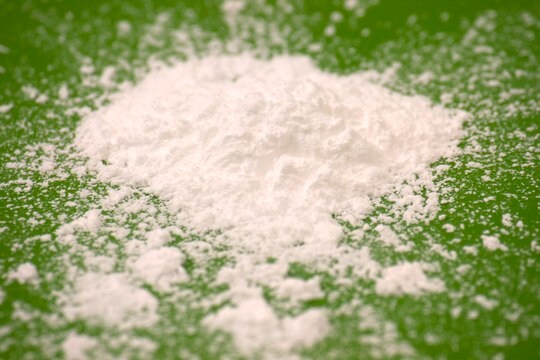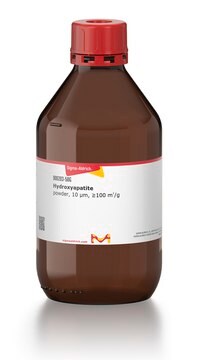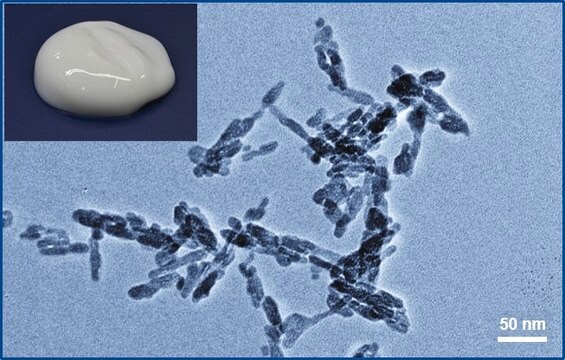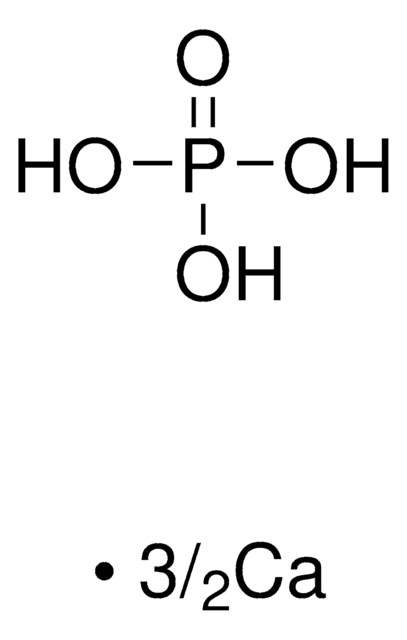900193
Hydroxyapatite
aqueous paste, <50 nm, 15 wt. %
Synonym(s):
Apatite hydroxide, Hydroxylapatite
Sign Into View Organizational & Contract Pricing
All Photos(2)
About This Item
UNSPSC Code:
12352305
NACRES:
NA.23
form:
paste
Recommended Products
description
Total Heavy Metals: ≤20 ppm
Quality Level
form
paste
concentration
15 wt. %
surface area
≥80 m2/g
particle size
<50 nm
Looking for similar products? Visit Product Comparison Guide
Application
Hydroxyapatite and tricalcium phosphate are bioactive ceramic materials and they find applications as bone grafts, fillers and coating material for metal implants.
Storage Class Code
13 - Non Combustible Solids
WGK
WGK 3
Flash Point(F)
Not applicable
Flash Point(C)
Not applicable
Choose from one of the most recent versions:
Certificates of Analysis (COA)
Lot/Batch Number
Don't see the Right Version?
If you require a particular version, you can look up a specific certificate by the Lot or Batch number.
Already Own This Product?
Find documentation for the products that you have recently purchased in the Document Library.
Customers Also Viewed
Liu Y, et al.
Carbon, 76, 250-250 (2014)
Lu Xie et al.
Materials science & engineering. C, Materials for biological applications, 59, 1007-1015 (2015-12-15)
The ideal bone tissue engineering scaffolds are long-cherished with the properties of interconnected macroporous structures, adjustable degradation and excellent biocompatibility. Here, a series of porous α/β-tricalcium phosphate (α/β-TCP) biphasic bioceramics with different phase ratios of α-TCP and β-TCP were successfully
Sahar Vahabzadeh et al.
Acta biomaterialia, 17, 47-55 (2015-02-02)
In this work we have investigated the effects of strontium (Sr) dopant on in vitro protein release kinetics and in vivo osteogenic properties of plasma sprayed hydroxyapatite (HA) coatings, along with their dissolution behavior. Plasma sprayed HA coatings are widely
Sophie C Cox et al.
Materials science & engineering. C, Materials for biological applications, 47, 237-247 (2014-12-11)
A systematic characterisation of bone tissue scaffolds fabricated via 3D printing from hydroxyapatite (HA) and poly(vinyl)alcohol (PVOH) composite powders is presented. Flowability of HA:PVOH precursor materials was observed to affect mechanical stability, microstructure and porosity of 3D printed scaffolds. Anisotropic
Our team of scientists has experience in all areas of research including Life Science, Material Science, Chemical Synthesis, Chromatography, Analytical and many others.
Contact Technical Service






